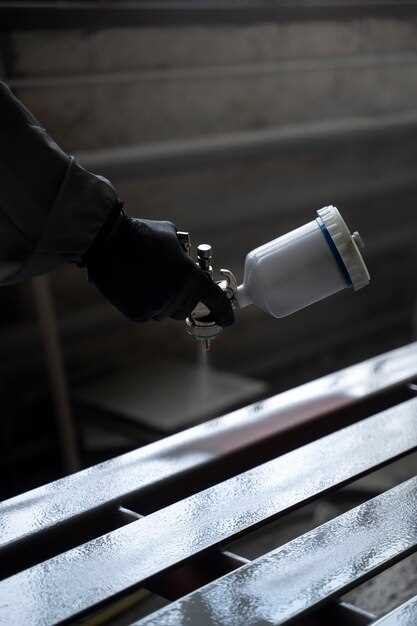
When it comes to automotive painting, understanding the differences between single-stage and base coat clear coat paint systems is essential for both enthusiasts and professionals. Each system offers distinct advantages and challenges that can significantly impact the finish and durability of the paint job. Choosing the right option can improve the aesthetic appeal of a vehicle while ensuring long-lasting protection against the elements.
Single-stage paint systems contain both color and clear protection in a single application. This type of paint is typically easier to apply and requires fewer steps, making it a popular choice for quick jobs or for projects where simplicity is key. However, the trade-off often comes in the form of durability and depth of finish, as single-stage paints can lack the depth that a separate clear coat provides.
On the other hand, the base coat clear coat system offers a two-step application process, where the base coat provides color and the clear coat adds shine and protective properties. This method is favored for its ability to create a superior finish with greater depth and gloss. Additionally, the clear coat acts as a barrier against UV rays, chemicals, and scratches, providing enhanced longevity. In this article, we will delve deeper into the attributes of each paint system, examining their benefits, drawbacks, and suitable applications, enabling you to make an informed choice for your next auto painting project.
Benefits of Single-Stage Paint for Automotive Applications
Single-stage paint is a popular choice in automotive applications due to its numerous advantages. Firstly, it combines the color and clear coat in a single product, which simplifies the painting process. This integration reduces the number of steps required during application, saving both time and labor, making it ideal for quick repairs or budget-friendly projects.
Another significant benefit is the ease of application. Single-stage paints typically require less skill and technique compared to base coat-clear coat systems. This makes them accessible for DIY enthusiasts and those with limited painting experience while still yielding satisfactory results.
Single-stage paint finishes can also provide good gloss and color depth. While they may not match the durability of a clear coat, many modern formulations offer an impressive sheen that can enhance the vehicle’s appearance. Additionally, single-stage paints often exhibit good resistance to fading and can be formulated to withstand varying weather conditions.
Cost-effectiveness is a notable advantage of single-stage paints. They generally have a lower price point compared to two-stage systems. This affordability makes them a favored choice for entry-level vehicles, fleet services, or hobbyists looking for cost-efficient solutions without compromising quality.
Maintenance is another area where single-stage paints shine. These paints usually require less frequent polishing compared to base coat-clear coat systems. This can lead to reduced upkeep and lower costs associated with maintaining the vehicle’s appearance over time.
In conclusion, single-stage paint offers a unique combination of ease of use, cost-effectiveness, and satisfactory visual appeal, making it a practical option for a range of automotive applications. Whether for professional refinishing or personal projects, its benefits cater to various needs and preferences in the automotive painting landscape.
Pros and Cons of Base Coat Clear Coat Systems
Base coat clear coat (BC/CC) systems are widely used in automotive painting for their durability and aesthetic finish. Understanding the advantages and disadvantages of this painting method is crucial for making informed decisions.
Pros

- Enhanced Appearance: BC/CC systems provide a deep, glossy finish that enhances the color and overall look of the vehicle. The clear coat adds depth and shine, making the paint job visually striking.
- Durability: The clear coat offers excellent protection against environmental elements, including UV rays, road debris, and chemicals. This durability helps maintain the vehicle’s appearance over time.
- Scratch Resistance: The clear coat layer provides a barrier that makes the surface more resistant to scratches and chips, prolonging the lifespan of the paint job.
- Easier Repair: In the event of damage, the clear coat can be polished or buffed without affecting the underlying base coat, allowing for localized repairs that save time and resources.
- Color Flexibility: A wide array of base coat colors are available, allowing for customization and creativity in selecting the desired hue.
Cons

- Complex Application Process: Applying a BC/CC system requires more skills and experience compared to single-stage systems. The proper sequence and conditions must be met for optimal results.
- Longer Curing Time: The drying and curing process for BC/CC paints is generally longer than single-stage systems, which can delay the final use of the vehicle.
- Potential for Issues: If not applied correctly, issues such as orange peel, runs, or poor adhesion can occur, resulting in a disappointing final appearance.
- Cost: Typically, BC/CC systems can be more expensive due to the additional materials and labor involved in the application process.
- Maintenance Requirements: While the clear coat offers protection, it can also require regular maintenance, such as waxing and polishing, to retain its shine and protective qualities.
Key Factors to Consider When Choosing Between the Two Options
When deciding between single-stage and base coat clear coat paint systems, several key factors merit careful consideration to ensure optimal results for your project.
Firstly, finish quality plays a critical role. Single-stage paints offer a vibrant, glossy appearance that can be appealing for certain applications, particularly for those seeking quick results. However, the base coat clear coat system provides enhanced depth and a more sophisticated finish, making it the preferred choice for high-end automotive refinishing.
Next, consider durrability. Base coat clear coat systems typically offer superior resistance to environmental factors such as UV rays, chemicals, and abrasion. This added protection means that vehicles painted with this system tend to maintain their appearance and integrity over time, reducing the need for frequent touch-ups and repainting.
Application complexity is another important factor. Single-stage paint is generally easier and faster to apply, making it suitable for DIY projects or for situations where time is of the essence. Conversely, the base coat clear coat system requires multiple steps, including applying the base coat and allowing it to cure before adding the clear coat, thus requiring more experience and precision.
Cost should also be evaluated. Single-stage paints often come at a lower price point, including application costs, making them an economical option for budget-conscious projects. However, investing in a base coat clear coat system may prove worthwhile in the long run due to its enhanced durability and aesthetics.
Finally, assess repair and maintenance aspects. While single-stage paints can be easier to repair, they may not blend as seamlessly as base coat clear coat systems when touched up. A base coat clear coat system, though more complex, allows for more effective repairs that can maintain the vehicle’s overall aesthetic integrity.
By taking these factors into account–finish quality, durability, application complexity, cost, and repair ability–you can make an informed choice that best suits your needs and expectations for your painting project.

